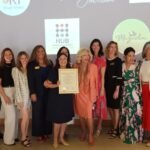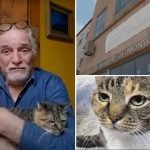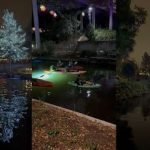Palm Aire’s Nick Barbi is not afraid to ask “stupid questions.”
“When you’re not necessarily an expert, but you feel that something makes sense and you start talking to people, you’re going to embarrass yourself one time or another,” he said, “But that’s what you need the others for.”
Barbi built a nonprofit off that sentiment.
The Science and Technology Society works with the likes of the National Aeronautics and Space Administration because Barbi’s “superpower” is taking ideas and bringing them to experts to make them happen. It’s never been a requirement that he knows the expert.
STS uses NASA technologies when offering workshops to local students. Barbi is currently working to promote the club on its website.
He also made a connection with a high school in Hawaii through NASA that wants spectrometers but doesn’t have the funding.
Spectrometers measure light. NASA offers instructions on how to make them, but even a simple one home costs about $200 to assemble.
Barbi’s goal is to make twice as many as they need at STS workshops and ship the leftovers to Hawaii, but that’s going to cost quite a bit more.
Since establishing STS in 2022, Barbi has never held a fundraiser. There are about 50 members who pay annual dues. A general membership costs $50 a year, and a family membership costs $75 a year.
Barbi also established the Mary Jo Barbi STEAM Education and Scholarship Fund, which helps fund the education programs.
But three years in, Barbi is ready to kick off an annual event to expand the club’s reach. His summer will be spent planning a music-oriented fundraiser, not a gala.
“Not the type of thing you wear a tuxedo to — one where you get some good music and people pay more than they should for the food,” Barbi said.
Nick Barbi, founder of the Science and Technology Society holds one of the spectrometers made by students.
Right now, the club is dependent on the kindness of partnerships, so he’s seeking additional funding and volunteers to propel STS to the next level.
That being said, Barbi has built several strong partnerships in a short few years. The University of South Florida and the Suncoast Science Center Faulhaber Fab Lab have provided meeting space, students and ideas to STS.
So what’s in it for members?
Members have likeminded, curious individuals to socialize with on a regular basis. STS holds monthly gatherings at different locales around Sarasota and Manatee counties.
STS also hosts speaker forums. Past speakers include Steve Davis with the Everglades Foundation, Charlie Hunsicker with Manatee County Natural Resources and Rob Brady with Robrady Design.
Moving forward, there will be three seminar tracks: Science and the Environment, Artificial Intelligence and Health and Medical Science. Each track will offer three seminars a year, so Barbi is looking for volunteers to head each track.
STS provides quite a few volunteer opportunities to its members.
The club provides judges for local robotics competitions, the Sarasota STEM Fair, Lakewood Ranch Preparatory Academy’s Science Fair and the Fab Lab’s RC Custom Car Open.
Members can help create and run the student workshops, and those with a background in science and technology can mentor students. However, mentoring requires a much larger time commitment.
Barbi also noted that not all the students who get involved are exceptional. Some are star students, but that’s not the point of STS. The overarching goal is to simply engage people with science and technology, which is not dependent on any set level of understanding.
Curiosity and interest are the only requirements to become a member.
To attract more interest from students, STS will be exploring wearable technology next year. Member Timothy Mastroianni wrote three books on the subject, so Barbi will tap into his background for expertise and contacts.
STS leans on experts as the source of understanding when it comes to any technology. In this case, Mastroianni will guide the type of sensors and software package they use.
The end goal is to illustrate how artificial intelligence can improve human performance. Sensors are placed on muscles, and the software package looks at how the muscles and joints move.
For example, the software could detect that a pitcher’s wrist is moving too early in a throwing motion, so the pitcher is directed to delay that movement.
“There’s so much science, so much data, so many techniques available that we need people to understand more,” Barbi said. “We need to become more science aware in our lives and understand how to get the real information.”











